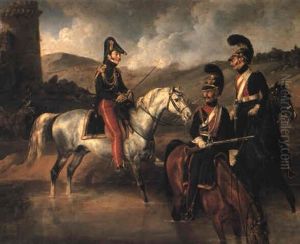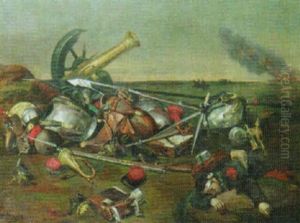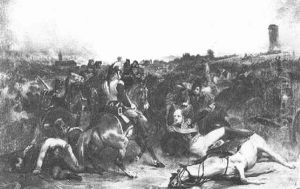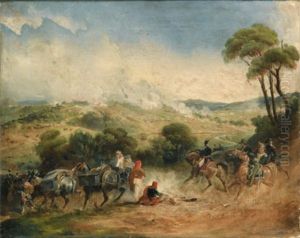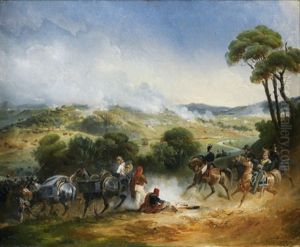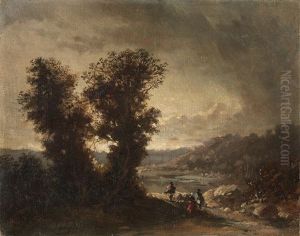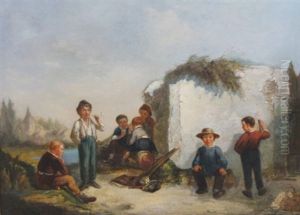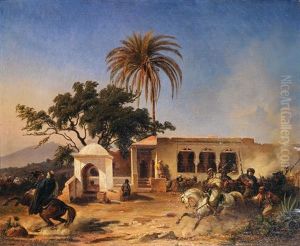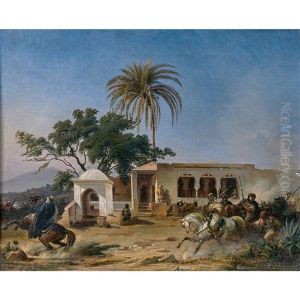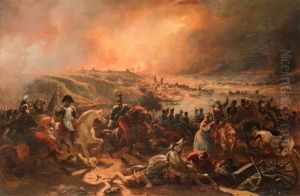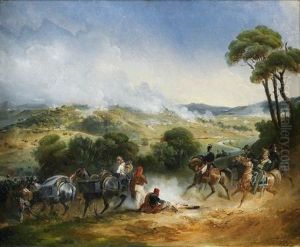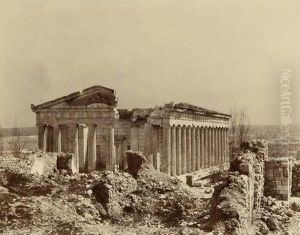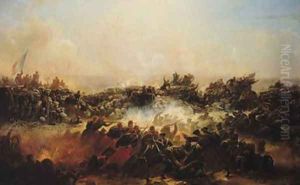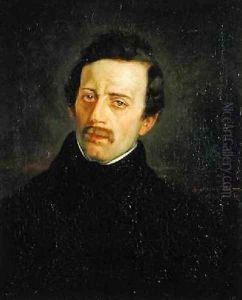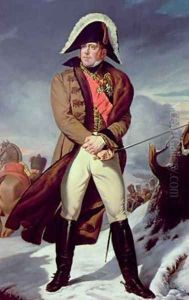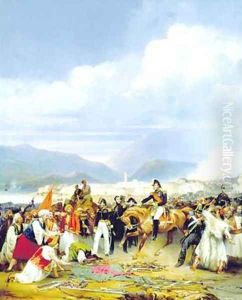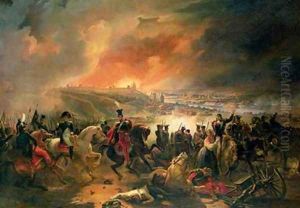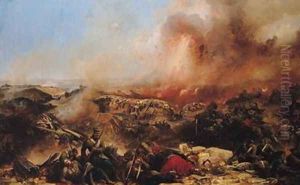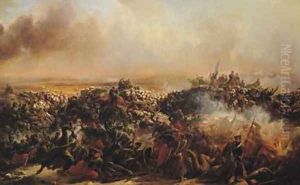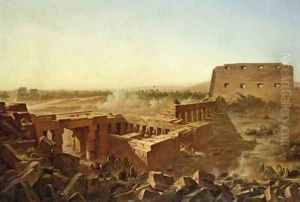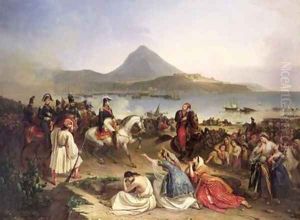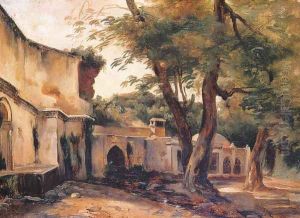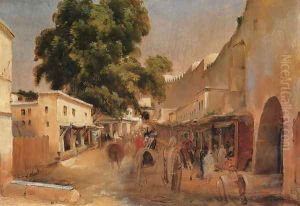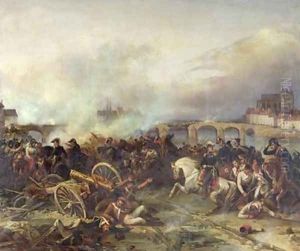Jean-Charles Langlois Paintings
Jean-Charles Langlois was a French soldier, painter, and lithographer, born in 1789 in Beaumont-en-Auge, Normandy. His life was a remarkable journey from the battlefield to the realm of art, illustrating the turbulent times of the Napoleonic Wars and the evolution of French art in the 19th century. Initially, Langlois embarked on a military career, joining the French army and participating in several significant Napoleonic campaigns, including the disastrous Russian campaign of 1812. His firsthand experiences in these conflicts provided a wealth of material for his later works.
After the fall of Napoleon, Langlois turned to art, studying under the tutelage of notable artists such as Antoine-Jean Gros, who was known for his dramatic portrayals of Napoleonic battles. Langlois's military background deeply influenced his artistic work, leading him to specialize in panoramic paintings and lithographs that depicted historical battles and scenes of warfare with remarkable accuracy and detail.
One of Langlois's most significant contributions to art was his involvement in the creation of panoramas, a form of large-scale painting that was designed to immerse the viewer in a 360-degree view of a historical scene. These panoramas were an early form of virtual reality, allowing people of the time to experience historical events and distant places in a novel and immersive way. Langlois's panoramas of battles, such as the Battle of Borodino, were celebrated for their realism and attention to detail, drawing large audiences and earning him considerable fame.
Despite his success, Langlois's work was sometimes critiqued for its emphasis on accuracy over artistic expression. However, his panoramas and paintings remain valuable historical documents, providing insight into the events they depict and the perspective of those who witnessed them firsthand.
Jean-Charles Langlois's career spanned a period of significant change in French art, from the neoclassicism of the early 19th century to the emerging romanticism and realism. His work reflects the intersection of art and history, capturing the tumultuous era in which he lived. Langlois passed away in 1870, leaving behind a legacy as a pioneer of the panorama and a valuable chronicler of Napoleonic warfare.
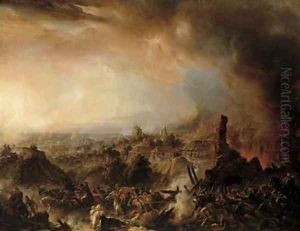
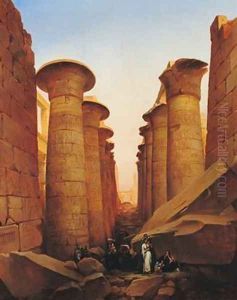

![Scene De Bataille [ ; A Cavarly Skirmish ; Oil On Canvas Signed Lower Right C Langlois]](https://www.niceartgallery.com/imgs/748118/s/jeancharles-langlois-scene-de-bataille-a-cavarly-skirmish-oil-on-canvas-signed-lower-right-c-langlois-c39efafe.jpg)
